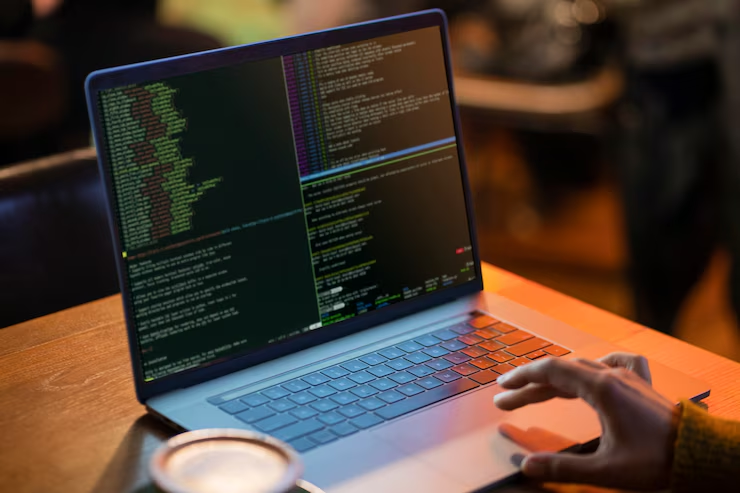Securing Your Laravel App: Best Practices for 2025
Securing Your Laravel App: Best Practices for 2025

As cyber threats evolve, securing your Laravel applications is more critical than ever. This blog highlights the latest best practices for 2025, including CSRF protection, encryption, and secure authentication. Learn how to protect your routes, validate user inputs, and manage sensitive data safely. Ideal for Happy Coders developers aiming to build secure and scalable Laravel apps. Stay ahead with modern security strategies to keep your web applications safe and reliable.
Laravel Security Checklist for 2025: Stay Ahead of Threats
Laravel continues to evolve, and so do the threats. In 2025, it’s critical to implement a proactive security checklist for your Laravel applications. From route protection to request validation, everything matters. Happy Coders uses a layered security strategy to protect clients’ data and systems. Following a checklist ensures consistency and peace of mind. Don’t skip essentials—secure smart.
CSRF, XSS, and SQL Injection: Protecting Laravel from Common Attacks
Most web vulnerabilities stem from improper data handling. Laravel provides CSRF tokens, request sanitization, and input validation to prevent common attacks like XSS and SQL injection. Happy Coders integrates these protections into every form, route, and query. Being aware of how these attacks work is key to stopping them. Secure by design is better than patching after. Prevention starts in your controller.
Security Practices:
-
Use
{{ }}instead of{!! !!}for output -
Always validate request inputs
-
Escape output in Blade templates
-
Never trust user data directly in DB queries
-
Enable Laravel’s built-in CSRF middleware
Secure Authentication in Laravel: Guarding User Accounts
User accounts are always a target. Laravel offers robust authentication scaffolding with hashed passwords, session protection, and multi-factor login options. Happy Coders upgrades auth flows with rate-limiting and login throttling. In 2025, protecting login pages and user identity is non-negotiable. Strong login flows = strong user trust.
Authentication Tips:
- Use Laravel’s
bcrypt()orHash::make()for passwords - Enable rate limiting with
ThrottleRequestsmiddleware - Add two-factor authentication (2FA)
- Use Laravel Fortify or Breeze for modern auth scaffolding
Keeping Laravel Packages and Framework Updated
Old packages are vulnerable to known exploits. Laravel and its ecosystem are frequently updated with patches and improvements. Happy Coders always tests and updates codebases as part of maintenance. Staying updated prevents being targeted through outdated libraries. Your app is only as secure as your dependencies.
Update Strategies:
-
Regularly run
composer updatewith caution -
Subscribe to Laravel’s security advisories
-
Use version constraints wisely in
composer.json -
Test thoroughly before pushing updates to production
Secure File Uploads in Laravel: Don’t Let Files Become Threats
Allowing users to upload files opens a major attack vector. Laravel offers safe ways to handle uploads, validate file types, and store files outside the public path. Happy Coders implements upload rules that filter MIME types and size. A single malicious file can compromise your entire server. Handle uploads with strict validation.
Best Practices for File Uploads:
-
Validate file type (
mimes,mimetypes) and size -
Store files in
storage/instead ofpublic/ -
Use Laravel’s
Storagefacade for secure access -
Rename uploaded files to prevent path traversal
Using Laravel Gates and Policies to Secure Permissions
Authorization is more than login—it’s about who can do what. Laravel Gates and Policies allow fine-grained access control across models and roles. Happy Coders uses them in all admin and user-level features. This protects sensitive actions like editing, deleting, or managing other users. Define access rules clearly. Let your app enforce security, not just your logic.
Why Gates/Policies Matter:
-
Separate logic from controllers
-
Centralized access control for resources
-
Easily testable and customizable
-
Scalable for enterprise roles and permissions
Environment Security: Protecting .env and Configuration Files
Your .env file holds critical credentials. Leaving it exposed can ruin your app in seconds. Happy Coders ensures .env is never accessible publicly and permissions are tightly controlled. In 2025, environment-level protection is as vital as code-level security. Don’t forget what’s behind the scenes.
Environment File Protection Tips:
-
Never commit
.envto Git -
Use proper server permissions (
600or640) -
Set
.envfiles outside the public directory -
Use environment-specific keys for production and dev
Encrypting Data in Laravel: When and How to Do It
Some data needs encryption, even at rest. Laravel provides built-in tools to encrypt and decrypt data using Crypt::encrypt() and Crypt::decrypt(). Happy Coders encrypts sensitive fields like personal IDs and payment tokens. With privacy laws tightening in 2025, encryption is a must-have, not a nice-to-have.
When to Use Encryption:
-
Storing personal data (IDs, tokens, etc.)
-
Saving payment or sensitive preferences
-
Sending confidential data between services
-
Securing API tokens or auth keys
Logging and Monitoring Laravel Apps for Security Events
If something breaks—or worse, is hacked—how will you know? Laravel logging helps track activities, and tools like Laravel Telescope and external monitors can notify instantly. Happy Coders sets up logging, alerts, and monitoring on all client apps. Logs are your first clue during a breach. Don’t fly blind—track everything.
Security Logging Tips:
-
Log login attempts, failures, and user actions
-
Use Laravel Telescope for in-depth debugging
-
Integrate with third-party monitors (e.g., Sentry, Bugsnag)
-
Rotate logs and store securely
Laravel Hosting Security Tips: Server-Side Best Practices
Even the most secure code fails on a weak server. Choose a host with SSL, regular backups, SSH access, and Laravel support. Happy Coders recommends using Laravel Forge or managed VPS providers. Keep your server lean and locked. Laravel’s security is only complete when the server is secure too.
Server-Side Protection Tips:
-
Disable public access to
storage/andvendor/ -
Use strong SSH credentials
-
Set file permissions carefully (
755for folders,644for files) -
Install firewalls and monitor traffic



